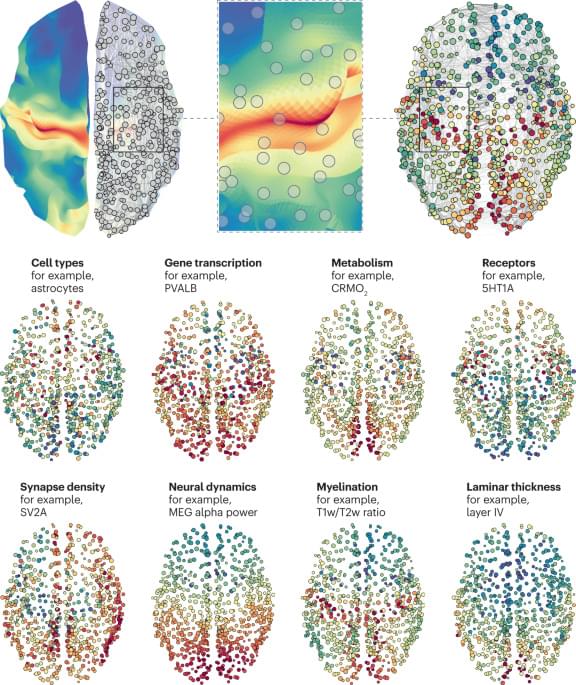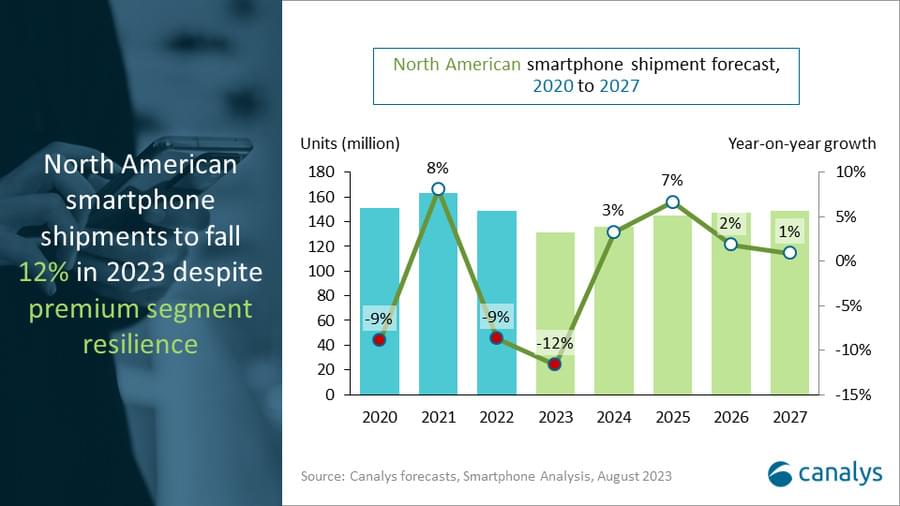Check out the The Cryosphere community on Discord — hang out with 1,002 other members and enjoy free voice and text chat.
Page 1170
Oct 20, 2023
350-Year-Old Theorem Reveals New Properties of Light
Posted by Paul Battista in categories: particle physics, quantum physics, space
Ever since the 17th-century debates between Isaac Newton and Christiaan Huygens about the essence of light, the scientific community has grappled with the question: Is light a wave or a particle — or perhaps, at the quantum level, even both at once? Now, researchers at the Stevens Institute of Technology have revealed a new connection between the two perspectives, using a 350-year-old mechanical theorem — ordinarily used to describe the movement of large, physical objects like pendulums and planets — to explain some of the most complex behaviors of light waves.
The work, led by Xiaofeng Qian, assistant professor of physics at Stevens and reported in the August 17 online issue of Physical Review Research, also proves for the first time that a light wave’s degree of non-quantum entanglement exists in a direct and complementary relationship with its degree of polarization. As one rises, the other falls, enabling the level of entanglement to be inferred directly from the level of polarization, and vice versa. This means that hard-to-measure optical properties such as amplitudes, phases, and correlations – perhaps even those of quantum wave systems – can be deduced from something a lot easier to measure: light intensity.
Oct 20, 2023
Towards a biologically annotated brain connectome
Posted by Paul Battista in categories: biological, mapping, neuroscience
High-resolution maps of biological annotations in the brain are increasingly generated and shared. In this Review, Bazinet and colleagues discuss how brain connectomes can be enriched with biological annotations to address new questions about brain network organization.
Oct 20, 2023
The Quest to Quantify Quantumness
Posted by Paul Battista in categories: computing, quantum physics
What makes a quantum computer more powerful than a classical computer? It’s a surprisingly subtle question that physicists are still grappling with, decades into the quantum age.
Oct 20, 2023
Researchers use measurements to generate quantum entanglement and teleportation
Posted by Paul Battista in categories: quantum physics, robotics/AI
Quantum mechanics is full of weird phenomena, but perhaps none as weird as the role measurement plays in the theory. Since a measurement tends to destroy the “quantumness” of a system, it seems to be the mysterious link between the quantum and classical world. And in a large system of quantum bits of information, known as “qubits,” the effect of measurements can induce dramatically new behavior, even driving the emergence of entirely new phases of quantum information.
This happens when two competing effects come to a head: interactions and measurement. In a quantum system, when the qubits interact with one another, their information becomes shared nonlocally in an “entangled state.” But if you measure the system, the entanglement is destroyed. The battle between measurement and interactions leads to two distinct phases: one where interactions dominate and entanglement is widespread, and one where measurements dominate, and entanglement is suppressed.
As reported in the journal Nature, researchers at Google Quantum AI and Stanford University have observed the crossover between these two regimes—known as a “measurement-induced phase transition”—in a system of up to 70 qubits. This is by far the largest system in which measurement-induced effects have been explored.
Oct 20, 2023
From a five-layer graphene sandwich, a rare electronic state emerges
Posted by Chima Wisdom in categories: materials, physics
Despite its waif-like proportions, scientists have found over the years that graphene is exceptionally strong. And when the material is stacked and twisted in specific contortions, it can take on surprising electronic behavior.
Now, MIT physicists have discovered another surprising property in graphene: When stacked in five layers, in a rhombohedral pattern, graphene takes on a very rare, “multiferroic” state, in which the material exhibits both unconventional magnetism and an exotic type of electronic behavior, which the team has coined ferro-valleytricity.
Oct 20, 2023
Why it’ll be hard to tell if AI ever becomes conscious
Posted by Gemechu Taye in category: robotics/AI
We know remarkably little about how AI systems work, so how will we know if AI becomes conscious?
Many people in AI will be familiar with the story of the Mechanical Turk. It was a chess-playing machine built in 1,770, and it was so good its opponents were tricked into believing it was supernaturally powerful. In reality, the machine had space for a human to hide in it and control it. The hoax went on for 84 years. That’s three generations!
History is rich with examples of people trying to breathe life into inanimate objects, and of people selling hacks and tricks as “magic.” But this very human desire to believe in consciousness in machines has never matched up with reality.
Oct 20, 2023
IGF 2023 WS #356 Encryption’s Critical Role in Safeguarding Human Rights
Posted by Gemechu Taye in categories: biotech/medical, encryption, governance, information science, internet, policy
Two types of technologies could change the privacy afforded in encrypted messages, and changes to this space could impact all of us.
On October 9, I moderated a panel on encryption, privacy policy, and human rights at the United Nations’s annual Internet Governance Forum. I shared the stage with some fabulous panelists including Roger Dingledine, the director of the Tor Project; Sharon Polsky, the president of the Privacy and Access Council of Canada; and Rand Hammoud, a campaigner at Access Now, a human rights advocacy organization. All strongly believe in and champion the protection of encryption.
I want to tell you about one thing that came up in our conversation: efforts to, in some way, monitor encrypted messages.
Policy proposals have been popping up around the world (like in Australia, India, and, most recently, the UK) that call for tech companies to build in ways to gain information about encrypted messages, including through back-door access. There have also been efforts to increase moderation and safety on encrypted messaging apps, like Signal and Telegram, to try to prevent the spread of abusive content, like child sexual abuse material, criminal networking, and drug trafficking.
Continue reading “IGF 2023 WS #356 Encryption’s Critical Role in Safeguarding Human Rights” »
Oct 20, 2023
Canalys Newsroom — North American smartphone shipments to fall 12% in 2023 despite premium segment strength
Posted by Gemechu Taye in categories: biotech/medical, mobile phones, robotics/AI
Smartphone sales have had their worst quarterly performance in over a decade, a fact that raises two big questions. Have the latest models finally bored the market with mere incremental improvements? And if they have, what will the next form factor (and function) be? Today a deep tech startup called Xpanceo is announcing $40 million in funding from a single investor, Opportunity Ventures in Hong Kong, to pursue its take on one of the possible answers to that question: computing devices in the form of smart contact lenses.
The company wants to make tech more simple, and it believes the way to do that is to make it seamless and more connected to how we operate every day. “All current computers will be obsolete [because] they’re not interchangeable,” said Roman Axelrod, who co-founded the startup with material scientist and physicist Valentyn S. Volkov. “We are enslaved by gadgets.”
With a focus on new materials and moving away from silicon-based processing and towards new approaches to using optoelectronics, Xpanceo’s modest ambition, Axelrod said in an interview, is to “merge all the gadgets into one, to provide humanity with a gadget with an infinite screen. What we aim for is to create the next generation of computing.”
Oct 20, 2023
Make stunning updates to your images with text prompts using Generative Fill
Posted by Gemechu Taye in category: robotics/AI
Adobe will premiere the first-ever TV commercial powered by its Firefly generative AI during high-profile sports broadcasts on Monday night. The commercial for Adobe Photoshop highlights creative capabilities enabled by the company’s AI technology.
Set to air during MLB playoffs and Monday Night Football, two of the most-watched live events on television, the new Adobe spot will showcase Photoshop’s Firefly-powered Generative Fill feature. Generative Fill uses AI to transform images based on text prompts.
With Adobe’s new commercial, generative AI will enter the mainstream spotlight, reaching audiences beyond just tech circles. While early adopters have embraced AI tools, a recent study found 44% of U.S. workers have yet to use generative AI, indicating its capabilities remain unknown to many.
The high-profile ad also lets Adobe showcase its AI leadership against rivals like OpenAI’s DALL-E in the increasingly competitive space of generative design. With AI capabilities now embedded in many tools, the commercial provides a chance for Adobe to demonstrate its edge and differentiate Photoshop for creative professionals.
Continue reading “Make stunning updates to your images with text prompts using Generative Fill” »
















